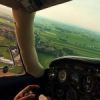IFR training tips in a C model - continuous thread
-
Members Online
- Gene Ford
- eman1200
- philiplane
- Aaviationist
- charlesual
- Fly Boomer
- Schllc
- CCAS
- hammdo
- mooneyflyer
- DC_Brasil
- exM20K
- Sabremech
- McMooney
- MikeOH
- Jeff Uphoff
- FlyingDude
- TCC
- mhrivnak
- M20S Driver
- BFF78
- thomas1142
- dzeleski
- Marc_B
- 201Steve
- DonMuncy
- ElkoRandy20J
- 47U
- FlyingScot
- Flyler
- Andrew Lin
- Stealth Mooney
- cctsurf
- Daily
- A64Pilot
- NewMoon
- 1967 427
- T. Peterson
- kaba
- Brian E.
- dkkim73


Recommended Posts
Join the conversation
You can post now and register later. If you have an account, sign in now to post with your account.